Last week my family and I explored some of the sights of Qatif district, about a 45-minute drive north of Dhahran, where we live in the Eastern Province. Qatif is a geographically large area that includes many towns and villages. It has a colorful history dating back 5,000 years. Qatif was known to the ancient Greeks, who called the area Cateus, and it was visited by the famous Arab explorer Ibn Battuta, in the 14th century, who, according to Arnold Wilson’s account in his book “The Persian Gulf,” described Qatif as being “a fine large place with many palms” after he stopped there on his way to Mecca. Throughout history, Qatif has hosted a succession of civilizations, including the Phoenicians and Sumerians in ancient times, and, more recently, the Portuguese and Turkish Ottomans.
The history of the region is complicated but what is today the Qatif district was also once a part of Bahrain until the defeat of the Ottomans during the First World War, after which it became part of the Kingdom of Saudi Arabia. For historical reasons — many centuries of Persian rule and influence — Qatif today is home to most of Saudi Arabia’s Shia muslim population.
During our day trip to Qatif, we visited Souk al-Khamis (a large open-air market), Souk al-Samak (fish, fruits and vegetables), the old fort in the town of Tarut (or Tarout), and, finally, the town of Dareen on Tarut Island, where ancient ruins and dhow fishing boats can be seen. Luckily, the worst of the hot summer weather seemed to be past and when we set out on the road the air was quite cool. For most of the morning, the weather was refreshingly pleasant and it did not get hot again until late morning.
From Dhahran we headed north on the road to Dammam, then continued beyond that city past lots of nurseries until we arrived at Souk al-Khamis. This is a general market where local people sell everything from clothing to spices, traditional craft wares, tools, snack foods, perfume, jewelry, pots and pans, fruits and vegetables, and even some antiques. We also saw one stall selling pets. There were mostly small birds and some rabbits, but I also saw some sorry looking cats. I was mostly interested in seeing the traditional crafts and there were several traders selling woven products, made from what looked like reeds, such as handheld fans, baskets, and large round “mats” that according to one woman, who was selling them, were traditionally used during meals as placemats for large plates holding food that was shared by multiple family members. Today, they are used more as decorations due to their artistic value and nostalgia for the “old days.” My wife bought some coriander at one of the spice stalls and we also bought some perfume. It was fun bargaining with the sellers and sampling the different perfumes. Apparently, the locals make little distinction between perfume for men and women, since the perfumes can be used by both. We spent well over an hour at this market before heading off to see the fish for sale at Souk al-Samak. The prospect of buying some freshly caught fish was, in fact, our main reason for visiting Qatif.
Souk al-Samak consisted of several large covered areas, one of which was for fish traders and the others were for fruit and vegetable sellers. After arriving at the market, we headed straight for the fish. We had brought a large Igloo ice chest with us for storing the fish until we got back home. There was quite a large variety of locally-caught fish for sale. Many of them were displayed on large trays. The nearby Gulf waters obviously had an abundance of fish because the displays were so impressive. The size of the fish ranged from about the size of a hand to very large red fish that had to be picked up with two hands. There were also shrimp and crabs. Unfortunately, we did know the names of all the different fish species but we purchased some red fish, large shrimps and some long thin fish that looked a little like mackerel. Even though the building where the fish were being sold was not air conditioned, the building was open at both ends and partially along one side, which helped to keep the inside of the building cool and prevented the smell from the fish from becoming too pungent. We walked all through the building to look at the different fish for sale and to get an idea of prices before trying to buy any of them. After a customer purchases some fish, the fish merchants will clean the fish and place them in plastic bags for carrying. If requested, they will also add some ice to the bags to help keep the fish fresh. After completing our purchases we walked out of the building and looked around the adjacent fruit and vegetable stalls.
We bought some papaya and some cauliflower. The prices were much cheaper than we have seen in any store in al-Khobar. We enjoyed a leisurely stroll around the fruit and vegetable market and then headed to the town and island of Tarut, which is connected to Qatif by two causeways.
Tarut is notable for its old fort, which, according to some accounts, was built by the Portuguese in the late 16th century on the site of older buildings that date back centuries. Archeological evidence suggests that settlements have existed on the site of the fort and surrounding buildings for about 5,000 years. We stopped at a bakery across from the fort and bought some small cinnamon rolls (2 riyals for four!). It was a very clean and well-organized bakery, with a long covered porch at the front that provided some respite from the midday sun. We crossed the road to walk over to the fort. Unfortunately, the fort is now fenced off and it seemed that it is no longer possible to walk around the fort, so we just viewed it from a distance and walked around the winding streets of the old village next to it.
The fort and houses are on top of a small hill, so we had to walk up a fairly steep hill to get to the center of the old settlement. It seemed to be almost deserted. The most interesting aspect of the houses was the ornate front doors. After finishing our walk we continued to our last stop of our tour of Qatif and surrounding area. We went to see the old port of Dareen and the dhow fishing boats moored offshore. There are also some old ruins in the town, although unfortunately we did not have time to look around them. Instead, we enjoyed the views of the ocean and the traditional dhow boats before heading back to Dhahran. It had been a short tour but it did provide us with some insight into the area and its history. I think that if we go there again we would like to hire a local guide who can explain the history in more detail.
We visited Qatif and Tarut Island on a trip organized by my employer but for anyone who is interested in visiting the area, there are a few websites that have some information that is likely to be useful for self-guided tours (such as virtualtourist, qatifoasis and world66). I have not found any professional tour companies that offer tours of Qatif or Tarut, so my suggestion would be to hire a driver who knows the area and can take visitors to the famous sites. I hope that if anyone who reads this article knows of appropriate tour companies, they will post some information about them in the comments.
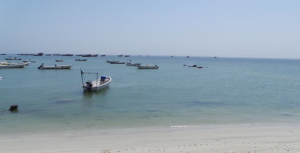
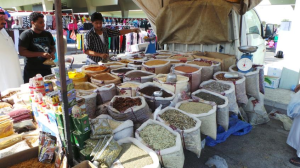

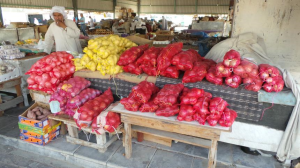
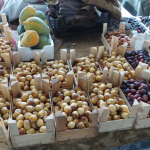
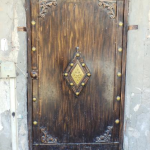
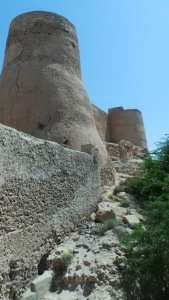
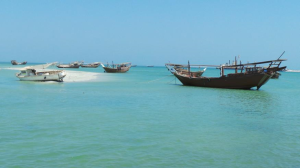
I visited Al-Qatif and Tarut, and thank you for this narration. I simply rented a car and went on my own. It was quite easy to drive to see the area, in my case from Jubail. I would recommend the Corniche on both Tarut and Al-Qatif. Google maps was accurate and provided excellent driving directions. The houses, both historic and contemporary, are spectacular edifices able to house very large families on multiple floors. There are many cafes and restaurants in both towns. For those who don’t speak Arabic, most restaurants are staffed by English-speaking expatriates. On Friday most restaurants were packing food for picnics. The Corniche is open for families to picnic, and many people were taking advantage of the lovely weather in December to do this. At this writing (December 2017) the Tarut fort was fenced off as archaeological research is being carried out. This was a most pleasant trip, and a great way to see local lifestyles.
Thank you for your feedback.
I plan to ride there on my bike sometime next week. Been talking to a friend who hails from the place and was happy of my interest to see and look around as I have come across interesting pictures off the net, he even went to as far as asking if I would like to get connected to the Friday cycling group around the area.
Will post an update when I get to go. Cheers!